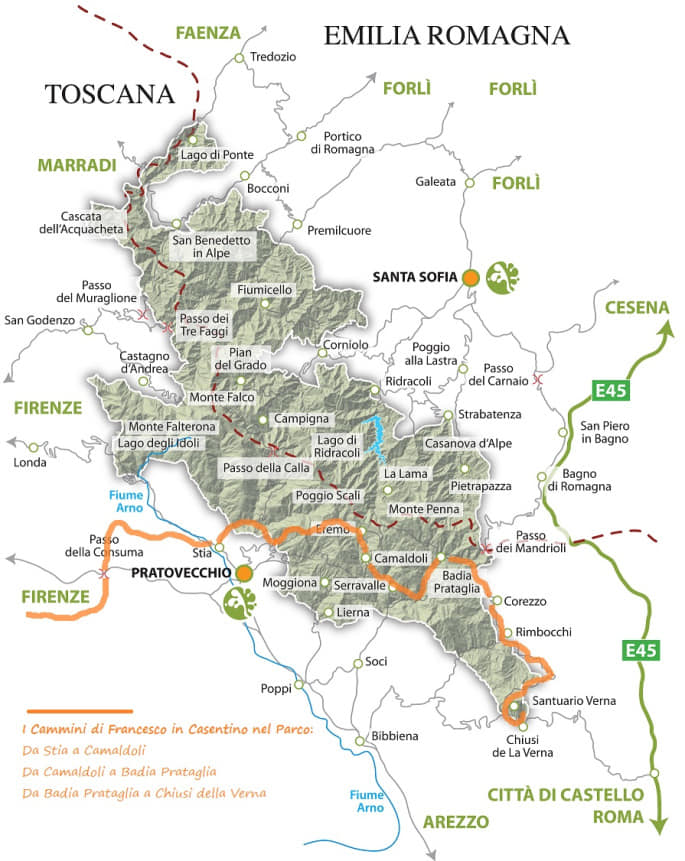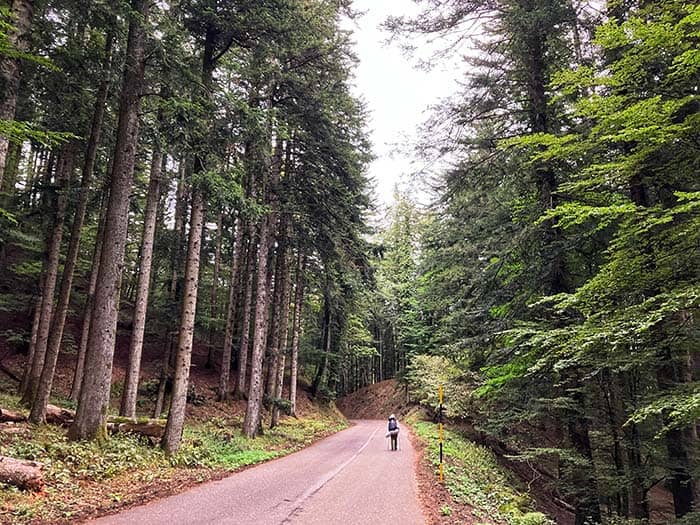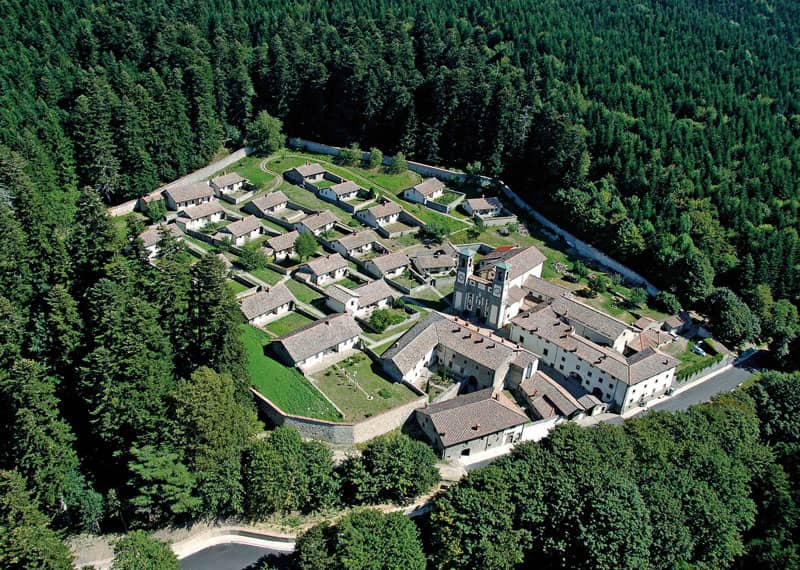Menu
Stepping off the cobbled streets of Stia, with its vibrant wool industry, you're drawn into the verdant embrace of the Casentinesi Forests National Park. Your final destination: the tranquil Camaldoli Monastery nestled deep within the heart of the forest.

Roughly 7 km into the fourth stage of your pilgrimage, at Casalino, you cross into the park’s lush domain. Here, the buzz of village life gives way to the serene rustle of leaves.
A fork in the trail presents two paths: one leading to a secluded mountain hermitage, the other guiding you toward the Camaldoli Monastery.
Regardless of your choice, both paths meander through the verdant forest, culminating at the Santuario della Verna.
Remember, camping is prohibited within the park except at sanctioned spots, like Camping Camaldoli near the monastery. You can also camp or stay overnight in the peaceful Rifugio Asqua, about halfway through the stage.

With each season, the forest breathes new life into its surroundings:
As you traverse the park, you’ll share the path with a fascinating array of creatures:
Remember, you are a guest in their home. Always observe them from a distance, and never attempt to feed or approach them.
The 11th-century Camaldolese Order, founded by St. Romuald, has left an indelible mark on the forest.
With their deep spiritual beliefs and commitment to sustainable forestry, they’ve preserved the forest’s biodiversity and nurtured a harmonious balance within the ecosystem.
Today, the monks continue their stewardship, viewing themselves not as masters, but as facilitators of the forest’s health.

The Casentinesi Forests National Park continues the Camaldolese monks’ legacy of conservation with several ongoing projects:
These projects reflect the park’s commitment to sustainable management of natural resources, showcasing the possibility and necessity of a harmonious relationship with nature.
By entering your email, you get the Quick Start emails, free Pilgrim Essentials Kit, and more resources, and agree to our Terms & Conditions and Privacy Policy.

An opportunity for pilgrims, seekers, and adventurers to take an inward journey alongside the spirit of St Francis.

A Toscana, non-religious non-profit to share the discovery and preservation of Franciscan tradition, Nature, and Art.
Disclosure: We may receive affiliate compensation for some of the links on this site if you decide to purchase linked items, helping us to maintain our trails and provide services to our community of pilgrims. Read our affiliate disclosure in our privacy policy.
By entering your email, you get the Quick Start emails, free Pilgrim Essentials Kit, and more resources, and agree to our Terms & Conditions and Privacy Policy.

An opportunity for pilgrims, seekers, and adventurers to take an inward journey alongside the spirit of St Francis.

A Toscana, non-religious non-profit to share the discovery and preservation of Franciscan tradition, Nature, and Art.
Disclosure: We may receive affiliate compensation for some of the links on this site if you decide to purchase linked items, helping us to maintain our trails and provide services to our community of pilgrims. Read our affiliate disclosure in our privacy policy.